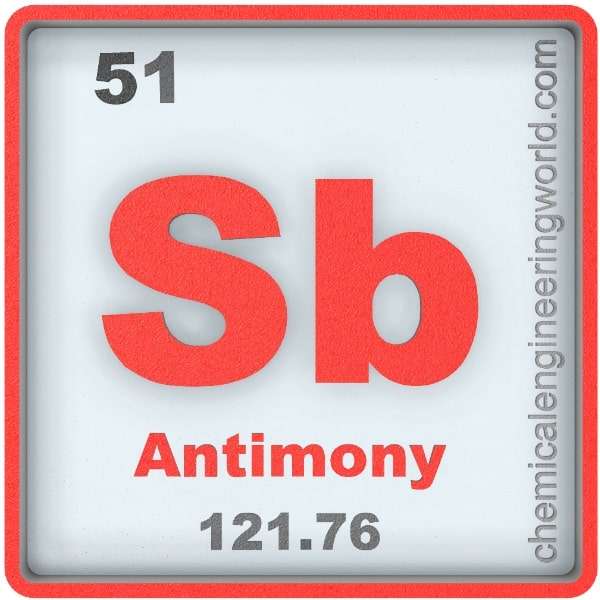Antimony Element Properties and Information

Antimony Element Properties and Information
Antimony is 51st element on the periodic table. Elements are arranged in the periodic table on the basis of the atomic number. Atomic number is the number of protons in the nucleus of the atom. Antimony has an atomic number of 51. It is located in the Group 15 and Period 5 of the periodic table of elements. It is denoted by Sb. The name is derived from the Greek word ‘Anti-Monos’ meaning Not-Alone.
Antimony is one of the elements which have been known since ancient times. It has been widely used throughout the civilizations of the world in Medieval times.
Antimony is found distributed in over 100 minerals but it is not a abundant element. Its mass in earth crust is around 0.2-0.5 ppm. The most common form in which it is found is antimony(III) sulfides. The antimony is also found in its native metallic form in nature.
Physical Properties
- Antimony is a silvery, hard & brittle semi-metal.
- The atomic mass of antimony is 121.75
- The melting point of antimony is 631°C
- The boiling point of antimony is 1587°C
- The density of antimony is 6684 in S.I. units at 20°C
- Four allotropes of antimony are known; one stable metallic form and three meta-stable forms.
- Antimony has two stable isotopes; antimony-121 and antimony-123. Among them, the antimony-121 isotope is found in relative natural abundance.
Chemical Properties
- Antimony burns in air and forms antimony-trioxide.
- Antimony generally forms Sb(III) and Sb(V) states. Among them, the Sb(V) state is more stable.
- Antimony reacts to form halides, hydrides, antimonides, and also organoantimony compounds.
Methods of Production
Reduction: Generally the ores contain antimony in sulfide form. The concentration of lower grade ores is done by froth-flotation, while higher-grade ores are heated to 500-600C. Antimony is separated from crude antimony sulfide by reduction with scrap iron. Antimony-oxide also forms in the process which is then isolated using a carbothermal reaction.
Relevance in Chemical and Related Industries
Catalyst: Antimony is used as a stabilizer and a catalyst polyethylene terephthalate.
Relevance in Other Industries
- Flame retardants: About 60% of antimony produced worldwide is used in flame-retardants. The halogenated antimony compounds react with hydrogen atoms, oxygen atoms, and hydroxide radicals thus inhibiting fire.
- Lead-acid batteries: About 20% of antimony produced worldwide is used in batteries. Antimony is combined with lead to produce a plate which is much stronger and also the charging characteristics are improved.
Health Effects on Exposure
Inhalation: The accumulation of antimony in body majorly happens through breathing in the antimony vapors. These vapors are present in oxide form. Exposure to the vapors is said to cause irritation of eyes, skin, and lungs. Long exposure is said to cause lung diseases, heart problems, stomach ulcers, etc.
Effects on Surroundings
- Soil: Antimony mainly accumulates in soils. When it mixes with ground water, it is capable of traveling large distances and polluting those locations as well. A relatively high level of antimony is capable of killing small animals. Breathing effects of antimony on animals are similar to that of humans.
References:
https://en.wikipedia.org/wiki/Antimony
https://www.lenntech.com/periodic/elements/sb.htm
https://www.rsc.org/periodic-table/element/51/antimony
































